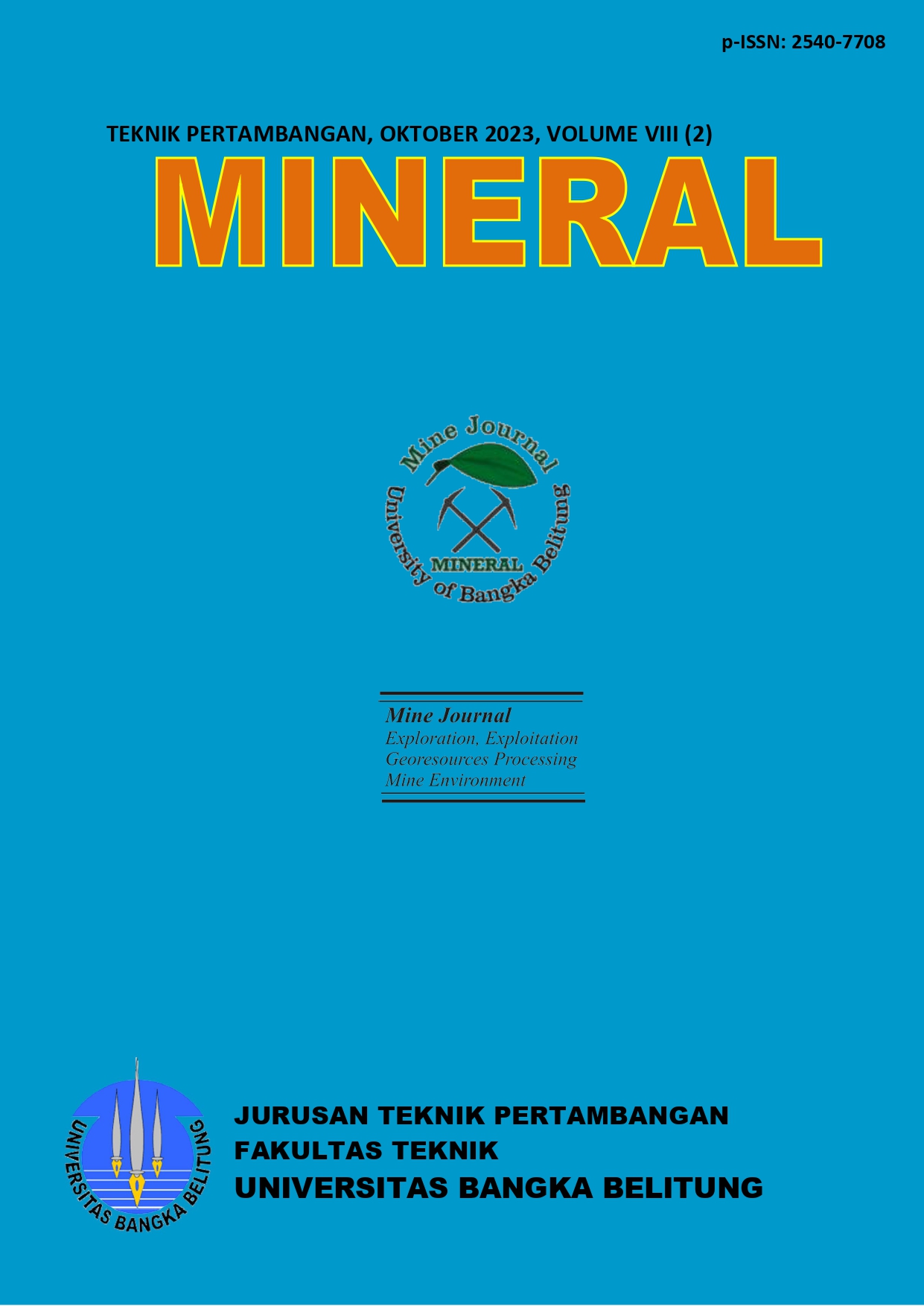Interpretasi Material Pada Rancang Bak Ukur Skala Laboratorium Dengan Pendekatan Konfigurasi Wenner, Wenner – Schlumberger dan Dipole-dipole
Material Interpretation in Laboratory Scale Measurement Design Using Wenner, Wenner–Schlumberger and Dipole-dipole Configuration Approaches
Abstract
Geoelectric measurements have been carried out using multichannel ResistivityMeter (Geores) tools with Wenner, Wenner-Schlumberger, and Dipole-dipole Configuration approaches on the influence of materials arranged in a laboratory-scale measuring tub design with dimensions of 194x184x80 cm. The measured method is the variation in resistivity value against each trajectory of the material. The method used is the variation of resistivity values for each path of the material that has been arranged in a laboratory scale measuring design. Geoelectric measurements were carried out on 7 lines (5 line in the West-East direction and 2 line in the North-South direction). The spacing between the electrodes of each line is 10 cm with 16 electrodes in one line so that each line has a length of 160 cm or 1.6 m which corresponds to the length and width dimensions of a laboratory scale measuring design. The electrode arrangement parameters are constant with respect to changes in the configuration selected from the geores parameters during geoelectric measurements. The measurement results showed that the identified depth reached 31.2 cm. The low resistivity value category has an interval of 374-4,397 ohm.meters at a depth of 0-12.5 cm, which is the influence of building sand material containing water and soil, while the depth interval is 12.5 - 31.2 cm ohm.meters (material category that is influenced by 2 iron rods, tin tailings sand, granite, gravel) with resistivity values ranging from 12,378–67,498 ohm.meters. From experiments on the influence of the resistivity values of the three Wenner, Wenner-Schlumberger, and Dipole-dipole configurations, it was obtained that the smallest absolute error resistivity value in the Wenner configuration was 5.01% against the overall average absolute error resistivity value of 10.16%.
Downloads










